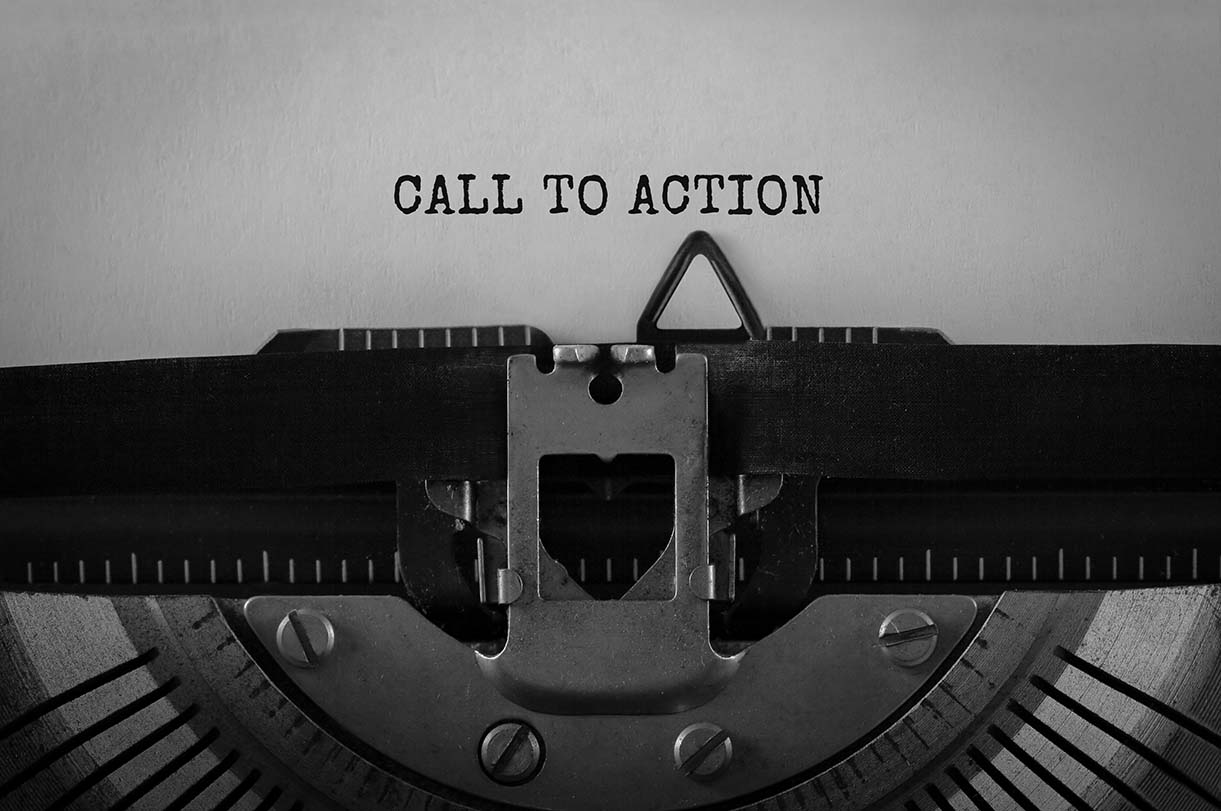If you have even only dipped your toes into online marketing, you will have come across the term “call to action” (CTA). They’re ubiquitously mentioned because of their efficacy. Calls to action display a click-through rate (CTR) of 4.23%. That’s more than double the average CTR of Google search ads at 1.91%, and more than ten times the rate of 0.35% for display ads. A single CTA in an email can improve click rates by a staggering 371% and purchases by 1617%. Including well-crafted CTAs in your digital marketing is essential, so Rosewood’s digital marketing team has put together everything you need to know about calls to action to get you results.
What is a call to action?
Calls to action are a staple of effective marketing. They are the main way to motivate and direct your potential customers and clients to complete a certain task that’s being promoted in your marketing. An ad, email, or social media post may show an enticing product, service, discount, or piece of content to pique their interest. It is the call to action’s job to then rouse someone to click and follow their curiosity.
CTAs are found in every kind of digital marketing. They are prompts in the text of blogs, posts, and ads. They are buttons on websites and ads. Even email subject lines can have calls to action. You may have followed a call to action to reach this blog from Rosewood’s own social media and you’ll find them in this article. They are everywhere because they are an essential conversion method of digital marketing. The ability of effective CTAs to convert marketing into revenue makes them integral to increasing your marketing’s results and return on investment.
What makes an call to action get results?
There is precision to creating an effective call to action with impressive click-through rates. Here are the staples for crafting successful CTAs that get results.
Intentional – Know the results you want
To create any call to action you need to have a clear intention, a defined goal and result for that piece of marketing. The CTA will result in a click, but it needs to be associated with another action attached to that click. It could be a specific purchase, redeeming a promotion, or contacting for information about a service. Establishing that precise goal allows you to set the impetus of the CTA and where it leads.
Directional
CTAs are meant to guide someone, and that is only possible if it provides clear direction and guidance. Most call to actions include a simple command or suggestion. Some common examples include “Read more”, “Check it out here”, “Buy now”, or “Follow the link in our bio”. All of these make it clear where they are steering a user. That direction also needs to continue beyond just the written prompt. Every call to action should be linked so that it leads to the relevant page or contact method. The last thing you want to give a viewer is the first direction and then leave them lost on your homepage wondering if they need to take the next right or left. They are more likely to just leave from confusion.
Clear and Concise
That direction should be clear and concise. Short and sweet is the standard practice. Simple commands like “read more” or “buy now” explicitly and concisely tells a user what they need to do. Providing longer or more complicated CTAs reduces clarity and clicks.
CTAs should also be visually clear. Hyperlinked text should be visible so that it is immediately recognizable that it leads to the relevant page. Even better are button CTAs with strong colours and text. These make a call to action more visually prominent and so they have better click-through rates. The average CTR of a button call to action is more than 1% higher than average at 5.31% with the highest performance at 70%.
Personalized
As with most marketing, the most effective calls to action are personalized. These identify a person by name, their location, language, or interests. A Hubspot study of over 333,000 CTAs found that personalized ones perform 202% better. Such personalization isn’t usually possible in social media, but Google and Meta ads and email marketing can utilize user information to create personalized marketing that speaks directly to your audience.
FOMO
Calls to action are about motivation. One of the most effective motivators is the “fear of missing out” (FOMO). This is not actual fear or anxiety but an incentive. FOMO incites someone to make an action a priority rather than forgetting and not following through later. Create this excitement by indicating time sensitivity. Identify clearly there is time limit on a promotion or that stocks are limited. Pair this with a call to action that creates urgency with words like “now”, “soon”, “today”, or a phrase like “don’t miss out” to inspire that click. Avoid making every CTA evoke FOMO, or users will soon become numb to its effects. If everything is urgent, nothing is.
Restraint and Focus
Lastly, calls to action are a crucial aspect of your marketing, but practice restraint. Don’t flood every piece of marketing with multiple to try to generate clicks. CTAs turn from motivating suggestions to tedious, overwhelming commands if they are a constant stream. Every piece of marketing should stick to a clear focus. Longer pieces of marketing like emails or blogs can have multiple CTAs; however, they should still be restricted to a thematic few that fit the overall piece of content.
Start Creating Your CTAs Now
Now you have the essentials to start crafting effective calls to action to see more directed results from your marketing. Want some assistance in creating or honing your CTAs for social media, blogs, ads, and emails? The best time to start is now. Talk about CTAs and the most productive for your business with our digital marketing team today. See? Urgency, clarity, and direction.



